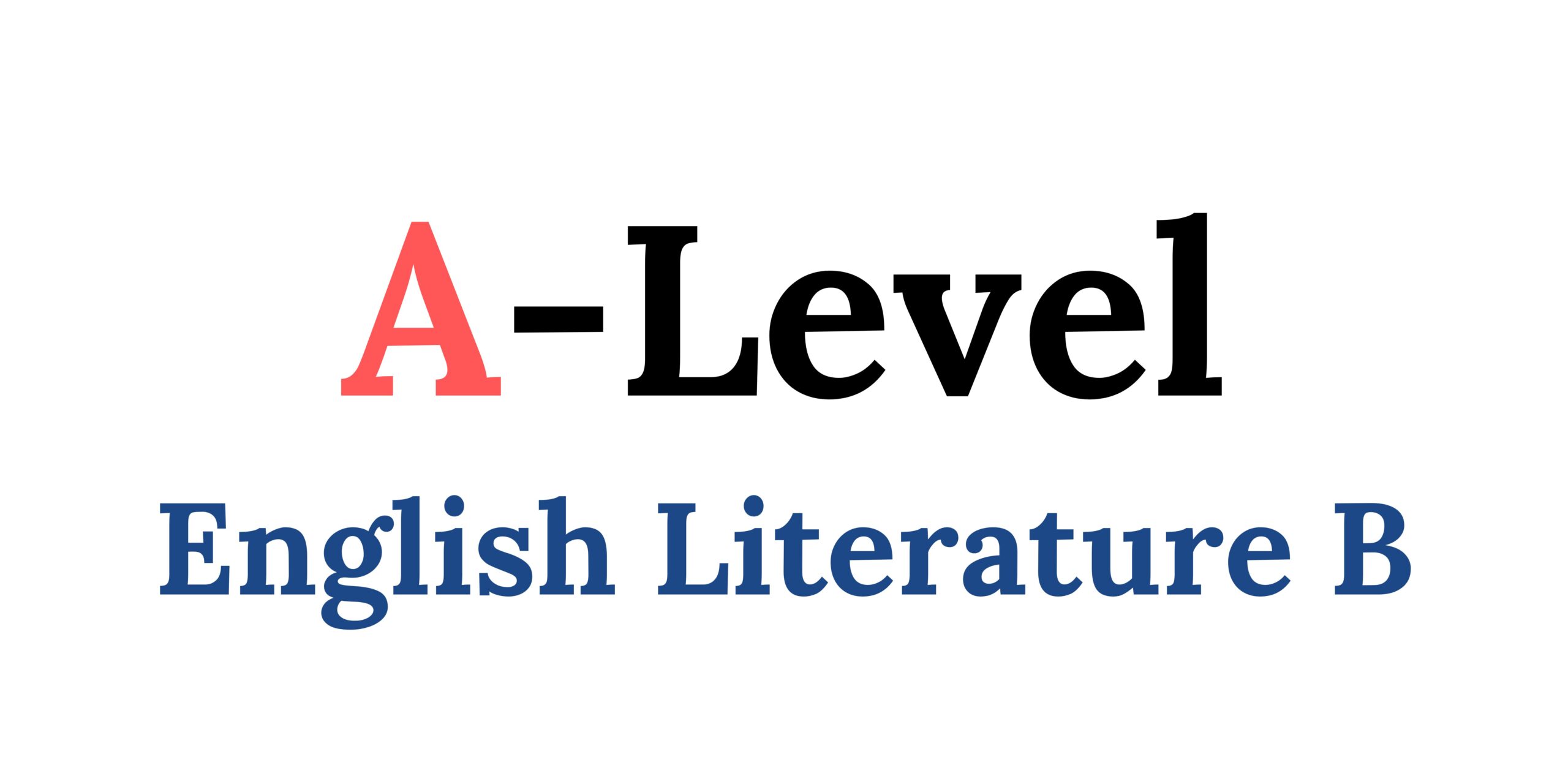
Overview of AQA A-level English Literature B qualifications
Subject content:
Want to learn more about Advanced Level Qualifications (A-Levels) and how they can shape your academic future? Click here to explore: A-Level Information.
1. Literary genres
In the “Literary Genres” section, texts are studied within the framework of traditional genres: Aspects of Tragedy or Aspects of Comedy. These genres, rooted in ancient literature, primarily focus on drama but have evolved over time, with selected texts offering both classic elements and modern variations.
Students choose one of two options:
– Option 1A: Aspects of Tragedy
– Option 1B: Aspects of Comedy
They study three texts: one Shakespeare play, a second drama text, and one additional text, with at least one pre-1900 work. The exam for this component is closed book.
Aspects of Tragedy
Tragedy centers on a flawed hero or heroine who suffers and causes suffering. Key tragic elements include:
• The type of tragedy (classical or domestic).
• The protagonist’s journey to death, their flaws, insights, and moral complexity.
• The role of villains, fate, and the inevitability of the hero’s demise.
• Violence, revenge, and moments of happiness.
• The structure from order to chaos, climax to resolution.
• Language heightening the tragic effect.
• The audience’s emotional journey through pity and fear, leading to insight into the human condition.
Students study one of the following plays by William Shakespeare: Othello or King Lear.
Students study two texts including one drama from the following list. At least one of the texts must be written pre-1900.
| Author | Text |
|---|---|
| F. Scott Fitzgerald | The Great Gatsby |
| Thomas Hardy | Tess of the D’Urbervilles (Post-1900) |
| John Keats | ‘Lamia’, ‘Isabella or The Pot of Basil’, ‘La Belle Dame Sans Merci’, ‘The Eve of St. Agnes’ (Pre-1900) |
| Arthur Miller | Death of a Salesman (drama) |
| William Shakespeare | Richard II (drama) (Pre-1900) |
| AQA English Literature B Poetry anthology (tragedy) | Extracts from the Prologue of’The Monk’s Tale’ and The Monk’s Tale , ‘Jessie Cameron’, Extract from Paradise Lost , ‘Tithonus’, ‘The Convergence of the Twain’, ‘The Death of Cuchulain’, ‘Out, out…’, ‘Death in Leamington’, ‘Miss Gee’ |
Aspects of Comedy
Comedy focuses on amusement and often revolves around love, with no major disasters. Themes include:
• The type of comedy (romantic drama, satire, or manners).
• Protagonists’ journeys toward happiness, misunderstandings, and eventual joy.
• Comic villains who disrupt but are eventually overcome.
• The idea that all ends well, with a focus on individual folly, trickery, and human behavior.
• The use of clowns, stereotypes, and exaggerated characters.
• Language and wit to elevate the humor.
• Comedy invites laughter at human flaws and a sense of joy in positive resolutions.
Students study one of the following plays by William Shakespeare: The Taming of the Shrew or Twelfth Night.
Students study two texts from the following list: one pre-1900 drama text and one further text.
| Author | Text |
|---|---|
| Jane Austen | Emma (Post-1900) |
| Geoffrey Chaucer | ‘The Nun’s Priest’s Tale’ including Prologue and Epilogue (Post-1900) |
| Oliver Goldsmith | She Stoops to Conquer (drama) (Pre-1900) |
| Andrea Levy | Small Island |
| Oscar Wilde | The Importance of Being Earnest (drama) (Pre-1900) |
| AQA English Literature B Poetry anthology (comedy) | ‘The Flea’, ‘Tam o’ Shanter’, ‘A Satirical Elegy on the Death of a Late Famous General’, ‘Sunny Prestatyn’, ‘Mrs Sisyphus’, ‘Not My Best Side’, ‘My Rival’s House’ |
2. Texts and genres
This section explores modern genres—Crime Writing or Political and Social Protest Writing—which are culturally influenced and constantly evolving.
Students choose between two options:
– Option 2A: Elements of Crime Writing
– Option 2B: Elements of Political and Social Protest Writing
Students study three texts, including one post-2000 prose text, one poetry text, and one additional text (one must be pre-1900). They also respond to an unseen passage in the exam, which could be from any genre, including literary non-fiction. The exam is open book, but texts cannot contain notes or annotations.
Elements of Crime Writing
Crime writing focuses on narratives driven by transgressions against established order. Key elements to explore include:
• Types of crime texts (e.g., detective fiction, revenge tragedy).
• Settings (places and times) for criminal actions and investigations.
• Nature of crimes, motives, and actions of criminals.
• Themes of violence, theft, betrayal, and murder.
• Detection and punishment, moral purpose, and restoration of order.
• Guilt, remorse, and confessions.
• Creation of detective heroes and criminal nemeses.
• How crime stories affect readers through suspense, excitement, and resolution.
Students study three texts from the following list: one post-2000 prose text, one pre-1900 poetry text and one further text.
| Author | Text |
|---|---|
| Kate Atkinson | When Will There Be Good News? (Post-2000) |
| Agatha Christie | The Murder of Roger Ackroyd |
| Samuel Taylor Coleridge | The Rime of the Ancient Mariner (Pre-1900) |
| George Crabbe, Robert Browning and Oscar Wilde | ‘Peter Grimes’,‘The Laboratory’, ‘My Last Duchess’, ‘Porphyria’s Lover’, ‘The Ballad of Reading Gaol’ (Pre-1900) |
| Charles Dickens | Oliver Twist (Pre-1900) |
| Graham Greene | Brighton Rock |
| Ian McEwan | Atonement (Post-2000) |
| William Shakespeare | Hamlet (Pre-1900) |
Elements of Political and Social Protest Writing
These texts center on power dynamics, oppression, and societal struggles, both public and private. Key elements include:
• Types of texts (e.g., science fiction, historical drama, satirical poetry).
• Settings (real or imagined) for political and social power struggles.
• Nature of power struggles, rebellion, and corruption.
• Human organization, gender politics, and social class issues.
• How political tensions are heightened or resolved.
• How these texts comment on society and invite readers to reflect on their own world.
Students study three texts from the following list: one post-2000 prose text; one poetry text and one further text, one of which must be written pre-1900.
| Author | Text |
|---|---|
| Margaret Atwood | The Handmaid’s Tale |
| William Blake | Songs of Innocence and of Experience (Pre-1900) |
| Jim Crace | Harvest (Post-2000) |
| Charles Dickens | Hard Times (Pre-1900) |
| Tony Harrison | Selected Poems‘V’, ‘National Trust’, ‘Them and [uz]’, ‘Divisions’,’ Working’, ‘Marked with D’ |
| Khaled Hosseini | The Kite Runner (Post-2000) |
| Henrik Ibsen (Translated by Michael Meyer) | A Doll’s House (Methuen Drama Student Edition 2008) * (Pre-1900) |
| William Shakespeare | Henry IV Part I (Pre-1900) |
3. Theory and independence
This section encourages students to engage in independent reading and explore literature using various critical and theoretical approaches. It provides a wide-ranging opportunity for students to study different ways of interpreting texts and produce independent work. AQA’s Critical Anthology supports this process by offering extracts on key theories, such as:
• Narrative theory
• Feminist theory
• Marxist theory
• Eco-critical theory
• Post-colonial theory
• Literary value and the canon
Students study two different texts—one poetry and one prose—each linked to a different section of the Critical Anthology. These texts must not be selected from the A-Level exam set texts and should allow for varied interpretations, referencing the Anthology.
Written Tasks
Students produce two essays (1250-1500 words each). One is a conventional essay, analyzing the text with critical theories, and the other can be a re-creative task, allowing students to creatively reinterpret parts of the text while applying critical ideas. Both tasks explore different interpretations of the texts.
Conventional Essays
Conventional essays focus on debate, exploring a literary text’s meaning through critical theories. For example, an essay might explore characters in A Passage to India from a post-colonial perspective.
Re-Creative Responses
Re-creative tasks allow students to fill gaps in the narrative, presenting new perspectives or voices (often marginalized in the original text). These responses are accompanied by a commentary explaining the critical theories applied and how the new perspective sheds light on the original text.
For example, a re-creative response might include journal entries from Miss Kenton in The Remains of the Day, informed by feminist or Marxist ideas, followed by a commentary explaining the creative choices.
If you need help with English Literature or any other subject, our tutors are ready to support you on your academic journey. Don’t miss your chance to succeed—take a trial lesson today!
Assessment
| Component | Content | Questions | Final score | Weighting of final grade |
|---|---|---|---|---|
| Paper 1: Literary genres | Choice of two options: Option 1A: Aspects of tragedy Option 1B: Aspects of comedy Study of three texts: one Shakespeare text; a second drama text and one further text, of which one must be written pre-1900 | Section A: one passage-based question on set Shakespeare text (25 marks) Section B: one essay question on set Shakespeare text (25 marks) Section C: one essay question linking two texts (25 marks) closed book | 75 marks | 40% of A-level |
| Paper 2: Texts and genres | Choice of two options Option 2A: Elements of crime writing Option 2B: Elements of political and social protest writing Study of three texts: one post-2000 prose text; one poetry and one further text, one of which must be written pre-1900 Examination will include an unseen passage. | Section A: one compulsory question on an unseen passage (25 marks) Section B: one essay question on set text (25 marks) Section C: one essay question which connects two texts (25 marks) open book | 75 marks | 40% of A-level |
| Non-exam assessment: Theory and independence | Study of two texts: one poetry and one prose text, informed by study of the Critical Anthology | Two essays of 1250–1500 words, each responding to a different text and linking to a different aspect of the Critical anthology One essay can be re-creative. The re-creative piece will be accompanied by a commentary | 50 marks assessed by teachers; moderated by AQA | 20% of A-level |
Weighting of assessment objectives for English Literature B
Exams will assess students on the following objectives:
AO1: Formulate informed, personal, and creative responses to literary texts, using relevant concepts, terminology, and clear, accurate written expression.
AO2: Analyze how meanings are constructed within literary texts.
AO3: Show an understanding of the significance of the contexts in which literary texts are written and received.
AO4: Examine connections between different literary texts.
AO5: Engage with various interpretations of literary texts.
| Assessment objectives AOs* | Component Paper 1 (%) | Component Paper 2 (%) | Component Non-exam assessment (%) | Overall Weighting (%) |
|---|---|---|---|---|
| AO1 | 11.2 | 11.2 | 5.6 | 28 |
| AO2 | 9.6 | 9.6 | 4.8 | 24 |
| AO3 | 9.6 | 9.6 | 4.8 | 24 |
| AO4 | 4.8 | 4.8 | 2.4 | 12 |
| AO5 | 4.8 | 4.8 | 2.4 | 12 |
| Overall weighting of components | 40 | 40 | 20 | 100 |
Assessment weightings
The marks awarded on the exam papers will be adjusted to align with the component weightings. Final marks are calculated by adding these scaled marks for each component. Grade boundaries will be determined based on the total scaled mark. The scaling and total scaled marks are outlined in the table provided.
| Сomponent | Maximum raw mark | Scaling factor | Maximum scaled mark |
|---|---|---|---|
| Paper 1: Literary genres | 75 | ×2 | 150 |
| Paper 2: Texts and genres | 75 | ×2 | 150 |
| Non exam-assessment: Theory and independence | 50 | ×1.5 | 75 |
| Total scaled mark: | 375 |











